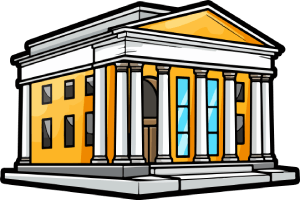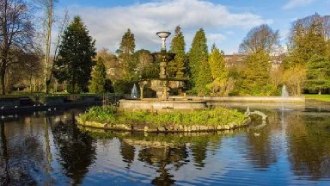Walking Through History: The Significance of Fitzgerald Park in Cork
Fitzgerald Park, located along the River Lee in Cork, is an eminent symbol of the city’s loyalty toward natural and cultural heritage. The park is more than just a public space. It is a testament to Cork’s evolving relationships with its environment, community, and history. Established after the 1902 Cork International Exhibition, the park remains a potent symbol of Cork’s vibrant past and their continuing reverence toward public spaces.
Origins and Historical Significance
The origins of Fitzgerald Park lie with the grand Cork International Exhibition of 1902 that extolled the city’s industrial and cultural achievements. After the exhibition, the grounds were finally converted into a recreation park. It was named after Edward Fitzgerald, the Lord Mayor of Cork, who was instrumental in prior organizing of the exhibition. This association with the industrial past of the city is extremely important in terms of the park keeping that double identity as a place transitioning from a temporary exhibition space to a permanent public garden.
A visionary gift intended to provide the Cork people with a place for recreation, Fitzgerald Park was designed to beautify and enhance the area while encouraging community life through open access to nature. Until today, the park stands as living proof of early 20th-century urban planning designed to give the public a place to rest and reflect, while serving as a foundation and impetus for local cultural activity.
Cork Public Museum: Opening a Window to the Past

The Cork Public Museum lies presents at the heart of Fitzgerald Park in a building belonging to the Beamish brewing family, constructed in the 1840s. This is a cultural institution and historical archive presenting exhibitions that explain the city’s rich past. The collections range from prehistoric items to things from the 20th century and form an invaluable resource in understanding how Cork grew as a town and its place in Irish history.
The museum, along with the park, is a testament to Cork’s strong link to the past with the intent of immortalizing the stories, culture, and accomplishments of its people into the future. In a way, the exhibits provide an account of how people lived their day-to-day lives while also showing the manner in which Cork has changed in its interaction with industry, art, and politics.
Sculptures and Artworks
Fitzgerald Park is filled with sculptures and statues that reflect Ireland’s turbulent history and cultural heritage. Among them is the statue of Michael Collins, the Irish revolutionary leader, by the famous Irish sculptor Seamus Murphy. This statue is not only raising the profile of Collins and his role in Ireland’s war for independence, but it also seeks to remind the public of the park’s continuing engagement in the country’s historical discourse.
More than just screen decoration, these artworks form one of the significant avenues for the park’s role as a cultural space. Each artwork builds new layers of meaning and engages visitors in the journeys of dialogue between the past and the present, in turn making them question ideas of the Irish identity.
A Greenspace for Reflection and Community

More than a historical and cultural deposit, Fitzgerald Park stands to bear witness to Limerick City’s commitment to the conservation of green spaces. The park’s landscape, with curved pathways bordered by vivid flowerbeds, culminating in a tranquil riverside setting, acts as an oasis in the heart of the country. It becomes the precedent of how urban spaces can be meshed with nature, bringing together the needs of people and environmental preservation.
Design-wise, the park landscape fits an aesthetic criterion; functionally, it provides various zones for reflection, leisurely walks, and gatherings. The central fountain, the lively flower beds, and the shaded canopy of the park’s soaring trees all call out to visitors to stop for a bit, reflect, and commune in the serenity of the setting. These features built over time have contributed toward making the park a community place where people from all walks of life come together to share a mutual natural environment.
Continuing Relevance in Modern Cork
In the present day, Fitzgerald Park stands as one of Cork’s most endearing sites, in memory of the city’s golden past as well as being very much a part of its living present. The park truly is a fusion of history, culture, and nature, attesting to Cork’s ever-evolving nature as a city that shall never lose sight of its past and shall never stop embracing the future.
